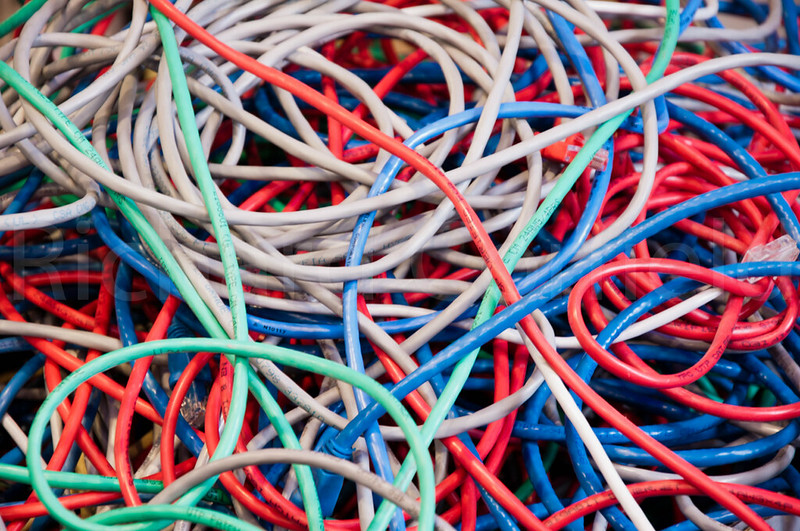Why The Internet Didn’t Break—But It Still Failed Millions
Tom Wheeler explains how the internet’s design prevents spikes in traffic during the COVID-19 pandemic from slowing everything to a halt.

Published by The Lawfare Institute
in Cooperation With

Editor's Note: This piece originally appeared on TechTank.
Working, studying, and playing at home during the COVID-19 pandemic has meant that residential internet usage has soared. According to one set of industry analytics, between Jan. 29 (shortly after COVID-19 appeared in the U.S.) and March 26 there was a 105 percent spike in people active online at home between 9:00 a.m. and 6:00 p.m. Accompanying this was an increase in the number of devices online in each home. More people plus more devices, of course, means greater demand on the network. So why hasn’t the internet ground to a halt?
The answer lies in the lessons of Mother’s Day and freeway traffic jams.
Watching Netflix Is The New Mother's Day Phone Call
In the days of analog telephone service, the network was designed with enough capacity to handle the surge in calls that happened on Mother’s Day and other holidays. If the capacity wasn’t there during times of peak demand, the call wouldn’t go through. The result was to build capacity in excess of normal demand. Between such special events that capacity sat idle.
For residential internet service, the equivalent of Mother’s Day has been Netflix and other online video services. Typically, peak demand for online video is between 8:00 p.m. and 11:00 p.m. Just like the old telephone company, internet service providers built their capacity to meet such peak demand. For the rest of the day, the video surge capacity sat unused.
Then came COVID-19. Working from home during traditional office hours filled the capacity that was waiting for the evening rush. Using video conferencing and other online capabilities thus became the work hours equivalent of Netflix in terms of network demand. Because, of Mother’s Day-like planning, network capacity was sitting there waiting for our workday usage.
Freeway Traffic Jams
Another reason the internet hasn’t crashed is its operational flexibility. The analog telephone network rigidly dedicated a specific end-to-end circuit to each call. When demand exceeded supply, the absence of a circuit meant the call did not go through. It was like a one lane bridge: if the lane was full, you didn’t get across.
The digital internet is more like a freeway: a common connection shared by many users simultaneously. Whether it is voice, or video, or computers talking to other computers, everything is converted into digital packets and those packets are then loaded cheek-to-jowl onto the internet to be sorted out at their destination. When the demand on the freeway increases above a certain level, the traffic slows; it doesn’t stop like the one-lane bridge, but bumper-to-bumper data packets move at a slower rate.
A recent independent study illustrated how this is working during COVID-19. Users in most cities were experiencing normal network conditions, but 88 of the largest 200 U.S. cities have seen internet speeds decline in the past week. While these cities have experienced degradation in terms of median download speeds, “the vast majority of them are still well within speeds that can support critical remote work and learning tasks,” the report concluded. For instance, in New York City, a COVID-19 hotspot, there has been a 24 percent decrease in speed, but the new median speed of 52 Mbps is still above the FCC’s definition of high-speed broadband (25 Mbps) and is holding up relatively well to provide functional connectivity.
The European Commission has tried to prevent such traffic jams by asking the online video companies to put fewer packets on the road. Because high-definition video requires the transmission of more data than standard definition video, Thierry Breton, EU Commissioner for Internal Market and Services, asked video services to transmit only standard definition video. Such a move, it is believed, will reduce traffic on European networks by around 25 percent.
The Internet Isn't a Unit, But a Collection
One of the great advantages—and vulnerabilities—of the internet during the COVID-19 crisis is its diversity. The internet is not a single homogeneous network like the unified Bell System of the telephone era. The term “internet,” in fact, is a contraction of the original term “internetworking” that reflects how it is a collection of interconnected but distinct networks.
Thus, for the internet to work, everything must work. Thus far, it has done so brilliantly. But “internetworking” means that the entire ecosystem must function as planned. Home Wi-Fi networks, last-mile delivery to homes, the private networks relied upon by many last mile providers, the backbone network to which everything connects, and the exchange points where the interconnections occur all are potential problem points.
As more people come to rely on the internet, and as more devices come online in America’s homes—from the office laptop, to multiple school tablets for the kids in the house, to the games that keep us from going crazy, to video outside of evening hours—the strength of the blended fabric that makes the internet will be stress tested.
Where The Internet Has Broken
The internet has already broken in one significant way: there are too many Americans for whom it is not available. Three months ago, internet access for all was important. With COVID-19 it has become critical. But for many Americans internet connectivity is only an aspiration.
According to the Federal Communications Commission (FCC), 21.3 million Americans do not even have access to a broadband internet connection. The FCC’s tracking of such measurements, however, is notoriously suspect: One independent study found 42 million Americans—twice the FCC’s number—without broadband internet access.
Most of these Americans live in rural areas. Over the last five years the FCC and U.S. Department of Agriculture (USDA) have provided more than $22 billion in subsidies and loans to telecommunications companies to pay for expanded rural service—but the gap continues. Amazingly, in the most recent COVID-19 recovery legislation, Congress gave USDA an additional $125 million for loans to rural telecommunications providers to build rural networks, but those networks do not have to meet minimum requirements for a high-speed service.
Finally, as FCC Commissioner Geoffrey Starks wrote in The New York Times, more than 18 million American households lack broadband because it’s too expensive. During the Reagan years, the Lifeline program was put in place to assure low-income Americans could call 911 by subsidizing their telephone service. It was subsequently expanded to cover wireless service, including using a smartphone to access the internet. The monthly $9.95 subsidy doesn’t go far enough, however, and the Trump FCC has cut back the number of companies that can participate in the program, making it harder for those who need the service. “To fight coronavirus, millions more Americans need internet access,” Commissioner Starks warned.
The Network Itself Hasn't Broken
Credit is due to the nation’s broadband providers. The fact we can work from home is the result of hundreds of billions of investment dollars and construction and operational skill. But the challenge is far from over. Three weeks ago, everyone’s point of reference for high-speed broadband networks was the one-way delivery of video services such as Netflix. Henceforth, broadband will be recognized for what it is: a critical two-way connection that can no longer be considered a luxury.





